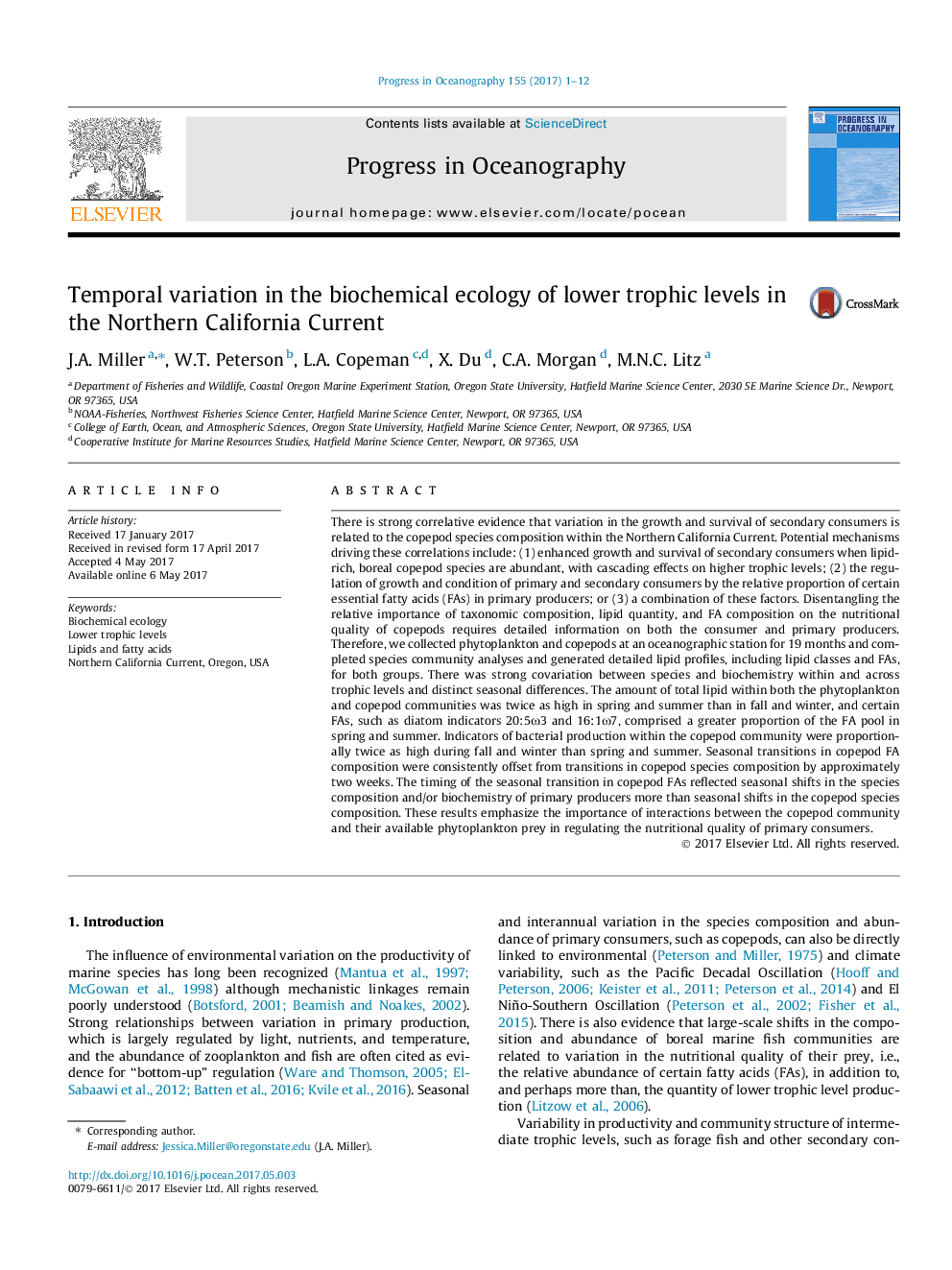| کد مقاله | کد نشریه | سال انتشار | مقاله انگلیسی | نسخه تمام متن |
|---|---|---|---|---|
| 5766534 | 1627903 | 2017 | 12 صفحه PDF | دانلود رایگان |
عنوان انگلیسی مقاله ISI
Temporal variation in the biochemical ecology of lower trophic levels in the Northern California Current
ترجمه فارسی عنوان
تنوع زمانی در محیط زیست بیوشیمیایی سطوح پایین تر طعمه در جریان کالیفرنیا شمالی
دانلود مقاله + سفارش ترجمه
دانلود مقاله ISI انگلیسی
رایگان برای ایرانیان
کلمات کلیدی
بوم شناسی بیوشیمیایی، سطوح پایین تنه لیپید ها و اسید های چرب، شمال کالیفرنیا جریان، اورگان، ایالات متحده آمریکا،
موضوعات مرتبط
مهندسی و علوم پایه
علوم زمین و سیارات
زمین شناسی
چکیده انگلیسی
There is strong correlative evidence that variation in the growth and survival of secondary consumers is related to the copepod species composition within the Northern California Current. Potential mechanisms driving these correlations include: (1) enhanced growth and survival of secondary consumers when lipid-rich, boreal copepod species are abundant, with cascading effects on higher trophic levels; (2) the regulation of growth and condition of primary and secondary consumers by the relative proportion of certain essential fatty acids (FAs) in primary producers; or (3) a combination of these factors. Disentangling the relative importance of taxonomic composition, lipid quantity, and FA composition on the nutritional quality of copepods requires detailed information on both the consumer and primary producers. Therefore, we collected phytoplankton and copepods at an oceanographic station for 19Â months and completed species community analyses and generated detailed lipid profiles, including lipid classes and FAs, for both groups. There was strong covariation between species and biochemistry within and across trophic levels and distinct seasonal differences. The amount of total lipid within both the phytoplankton and copepod communities was twice as high in spring and summer than in fall and winter, and certain FAs, such as diatom indicators 20:5Ï3 and 16:1Ï7, comprised a greater proportion of the FA pool in spring and summer. Indicators of bacterial production within the copepod community were proportionally twice as high during fall and winter than spring and summer. Seasonal transitions in copepod FA composition were consistently offset from transitions in copepod species composition by approximately two weeks. The timing of the seasonal transition in copepod FAs reflected seasonal shifts in the species composition and/or biochemistry of primary producers more than seasonal shifts in the copepod species composition. These results emphasize the importance of interactions between the copepod community and their available phytoplankton prey in regulating the nutritional quality of primary consumers.
ناشر
Database: Elsevier - ScienceDirect (ساینس دایرکت)
Journal: Progress in Oceanography - Volume 155, June 2017, Pages 1-12
Journal: Progress in Oceanography - Volume 155, June 2017, Pages 1-12
نویسندگان
J.A. Miller, W.T. Peterson, L.A. Copeman, X. Du, C.A. Morgan, M.N.C. Litz,
